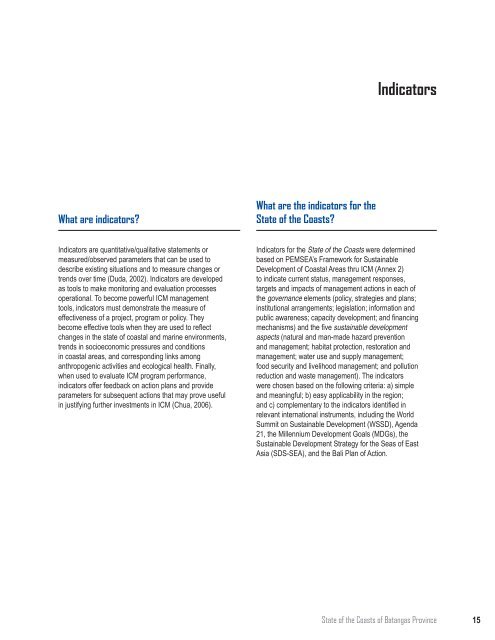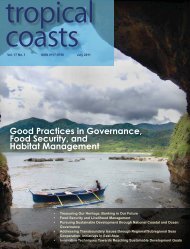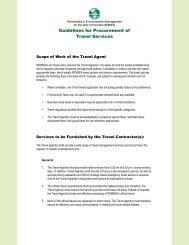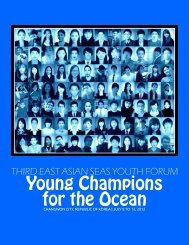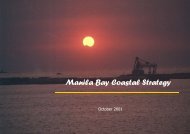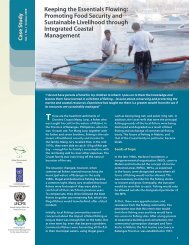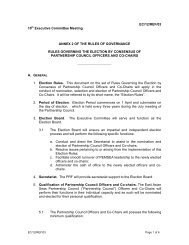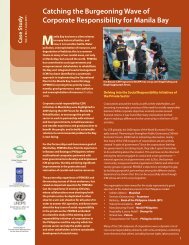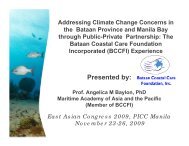Download PDF Copy - Pemsea
Download PDF Copy - Pemsea
Download PDF Copy - Pemsea
Create successful ePaper yourself
Turn your PDF publications into a flip-book with our unique Google optimized e-Paper software.
Indicators<br />
What are indicators<br />
What are the indicators for the<br />
State of the Coasts<br />
Indicators are quantitative/qualitative statements or<br />
measured/observed parameters that can be used to<br />
describe existing situations and to measure changes or<br />
trends over time (Duda, 2002). Indicators are developed<br />
as tools to make monitoring and evaluation processes<br />
operational. To become powerful ICM management<br />
tools, indicators must demonstrate the measure of<br />
effectiveness of a project, program or policy. They<br />
become effective tools when they are used to reflect<br />
changes in the state of coastal and marine environments,<br />
trends in socioeconomic pressures and conditions<br />
in coastal areas, and corresponding links among<br />
anthropogenic activities and ecological health. Finally,<br />
when used to evaluate ICM program performance,<br />
indicators offer feedback on action plans and provide<br />
parameters for subsequent actions that may prove useful<br />
in justifying further investments in ICM (Chua, 2006).<br />
Indicators for the State of the Coasts were determined<br />
based on PEMSEA’s Framework for Sustainable<br />
Development of Coastal Areas thru ICM (Annex 2)<br />
to indicate current status, management responses,<br />
targets and impacts of management actions in each of<br />
the governance elements (policy, strategies and plans;<br />
institutional arrangements; legislation; information and<br />
public awareness; capacity development; and financing<br />
mechanisms) and the five sustainable development<br />
aspects (natural and man-made hazard prevention<br />
and management; habitat protection, restoration and<br />
management; water use and supply management;<br />
food security and livelihood management; and pollution<br />
reduction and waste management). The indicators<br />
were chosen based on the following criteria: a) simple<br />
and meaningful; b) easy applicability in the region;<br />
and c) complementary to the indicators identified in<br />
relevant international instruments, including the World<br />
Summit on Sustainable Development (WSSD), Agenda<br />
21, the Millennium Development Goals (MDGs), the<br />
Sustainable Development Strategy for the Seas of East<br />
Asia (SDS-SEA), and the Bali Plan of Action.<br />
State of the Coasts of Batangas Province<br />
15


